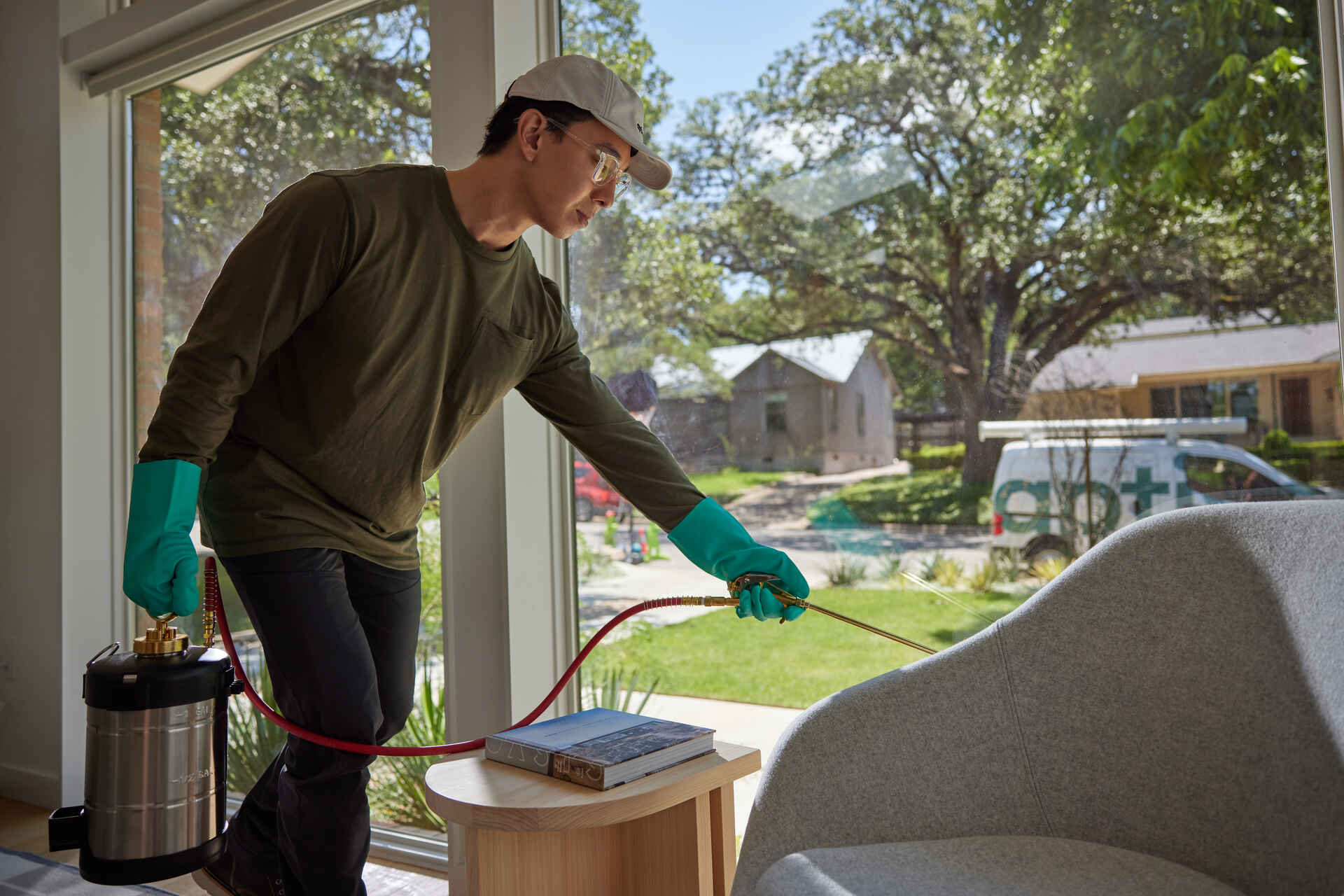Efficient A1 Bed Bug Treatment in Charlotte - Safe and Proven Methods
Efficient A1 Bed Bug Treatment in Charlotte - Safe and Proven Methods
Blog Article
Bed Insect Therapy Malfunction: Contrasting Chemical Vs. Non-Chemical Solutions
In the realm of bug control, specifically when managing the consistent concern of bed insects, the selection between chemical and non-chemical treatment services can be an essential one. Both techniques offer distinct advantages and downsides, influencing aspects such as effectiveness, safety and security considerations, and overall cost. By examining the nuanced information of each method, a clearer understanding of which path to go after in dealing with a bed bug invasion can be obtained.
Efficiency of Chemical Therapies
Chemical treatments for bed insect infestations have been extensively recognized for their potent and fast efficacy in eradicating these bugs. When thinking about the efficiency of chemical treatments, it is crucial to understand that they can offer a quick and comprehensive remedy to a bed insect trouble.
Furthermore, chemical treatments have the benefit of providing recurring results, suggesting that they can proceed to eliminate bed insects even after the initial application. This recurring activity is especially helpful in combating any type of potential re-infestations. In addition, the fast action of chemical treatments can bring relief to people encountering extreme bed bug infestations, permitting them to restore control of their space promptly.
Safety And Security Interest In Chemical Solutions
One important element that needs cautious consideration when using chemical services for bed pest therapy is making sure the safety and security of owners and the setting. Direct exposure to certain chemicals used in bed bug therapies can lead to respiratory system concerns, skin irritation, or various other damaging responses, particularly in individuals with pre-existing conditions or sensitivities.
Moreover, the ecological influence of chemical options is an additional substantial consideration. Some chemicals made use of in bed bug treatments may be dangerous to helpful insects, wildlife, and environments if they leach into the dirt or water supply. It is necessary to utilize chemical treatments judiciously, adhering to security guidelines, and taking into consideration much less poisonous choices to alleviate these risks and guarantee the effective and risk-free monitoring of bed pest invasions.
Benefits of Non-Chemical Strategies
Taking into consideration the prospective safety and security concerns and environmental effect connected with chemical services for bed bug therapy, discovering non-chemical methods provides a promising option with numerous distinctive advantages. Non-chemical treatments are ecologically pleasant, as they do not add to air or water air pollution, making them a sustainable choice for insect control.
Furthermore, non-chemical remedies can be efficient in targeting bed insects, including hard-to-reach locations where chemical treatments might not penetrate - A1 pest control charlotte nc bed bugs. Approaches such as warmth treatment, vacuuming, vapor cleansing, and mattress coverings offer complete obliteration without the usage of damaging chemicals.
Limitations of Non-Chemical Treatments

Furthermore, non-chemical therapies frequently need numerous applications to achieve successful eradication. This can be lengthy and wasp killer might not constantly guarantee total removal of all bed pests and their eggs, particularly in hard-to-reach or surprise places.
Moreover, the success of non-chemical therapies heavily counts on correct implementation and thoroughness, which can be challenging for people without professional know-how. Insufficient application of non-chemical techniques might lead to insufficient eradication, causing consistent invasions and the requirement for extra treatments.
Therefore, while non-chemical treatments have their advantages, it is important to recognize these restrictions and consider them when figuring out one of the most effective approach for managing pest control treatment bed bug infestations.
Cost Comparison: Chemical Vs. Non-Chemical Options
Provided the limitations related to non-chemical treatments, an essential aspect to assess in the context of bed pest administration is the price comparison between chemical and non-chemical choices. Chemical treatments usually entail the application of pesticides by experts, which can vary from $250 to $900 per space, depending upon the intensity of the problem and the dimension of the area to be treated. On the other hand, non-chemical therapies like warmth therapy or heavy steam can be more expensive, with costs varying from $1,000 to $6,000 for a whole home. While the initial price of chemical treatments may appear reduced, numerous treatments may be called for to totally remove the invasion, potentially boosting the total cost. On the other hand, non-chemical choices might provide a more sustainable and green service, although they can be cost-prohibitive for some individuals. Inevitably, when thinking about the price of bed bug therapy choices, it is necessary to consider the in advance expenses versus the effectiveness and lasting sustainability of the selected method.
Conclusion

Taking into consideration the prospective safety concerns and ecological influence linked with chemical services for bed bug therapy, exploring non-chemical approaches offers an encouraging option with numerous unique benefits.Provided the limitations linked with non-chemical treatments, a crucial aspect to evaluate in the context of bed bug management is the cost contrast in between chemical and non-chemical options. In comparison, non-chemical therapies like warmth therapy or vapor can be much more expensive, with prices varying from $1,000 to $6,000 for an entire home. While the first cost of chemical treatments might seem reduced, multiple treatments might be needed to fully remove the infestation, possibly enhancing the total cost.In verdict, when comparing chemical and non-chemical bed insect treatment choices, it is essential to think about efficiency, safety and security, benefits, limitations, and cost.
Report this page